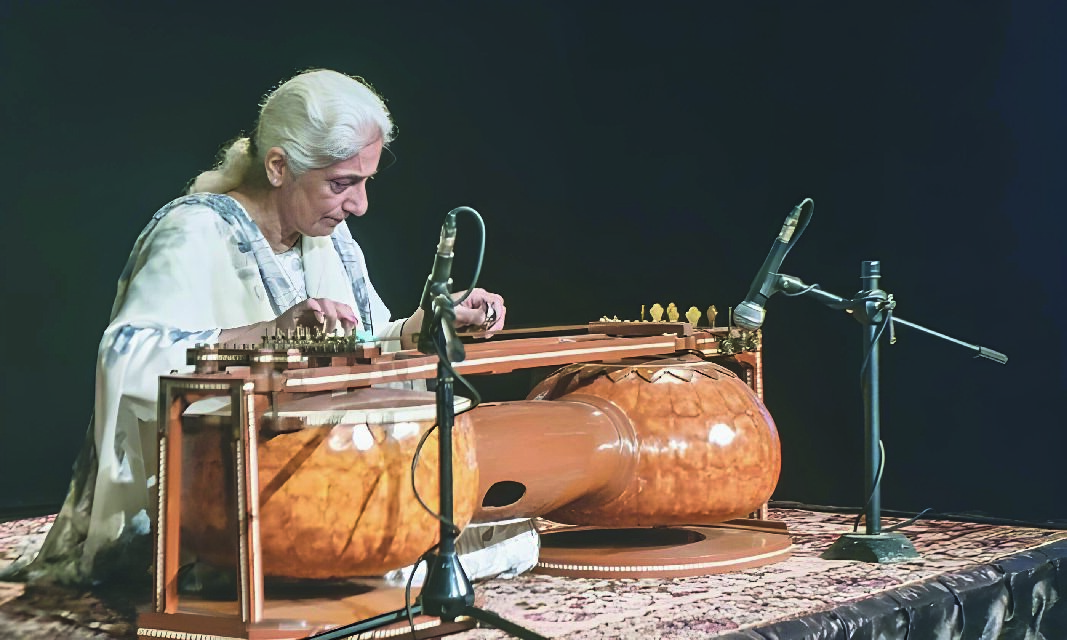Uncategorized
Nurturing a Classical Infant

By Imran Shirvanee
Classical music has a long history, but in that long history there is a very recent entrant Sagar Veena which was created in Lahore in 1970. In fact, its present version was finalized as late as 2012 by the inventor Raza Kazim. A man of many talents and a musicologist, his love for the instrument is being carried forward by his daughter Noor Zehra Kazim, who is perhaps the finest exponent of Sagar Veena playing. Being a new entrant does this instrument have any future in this dwindling classical music environment? Noor Zehra believes it has a future. And she has a reason for saying that. “Our natural response to our own music is inherent in the raags and their structures,” she explains. “Sagar Veena is capable of exposing us to the undiscovered aspects of those emotions. The conceptual route means that it is already a part of a thought structure. If that belongs to these times and its people, then Sagar Veena is only a means to convey them.”
Noor Zehra explains the instrument was developed on the basis of ideas contrary to the evolutionary route which most of the musical instruments that are handcrafted have taken. The evolutionary stages of any instrument are mainly dependent on the aesthetics of the musician who gets those changes done, and also his own understanding of the structure of the instrument, which was always insufficient. The present instrument makers in India mainly have perfected the art. The younger generation instrument makers have also utilized the technology to make them. On the other hand, Sagar Veena was constructed on the basis of understanding the principles of how a stringed musical instrument works.
“In fifty years the Sagar Veena was standardized. Unfortunately the most crucial part of the instrument, the jowahri could not be completed, as Raza abruptly stopped working due to health issues. The sound of the Sagar Veena keeps changing on a micro level,” says Noor Zehra.
She believes potentially the instrument can communicate much more than the sitar or surbahar. Its resonant sound can tap those areas of the mind which other stringed instruments cannot. “Listeners don’t pinpoint the reason, but they respond to the resonant sound,” she says. “The music is exactly the same as on the sitar. In fact the rhythmic and fast tempo music is better expressed on the sitar. The alaap, which literally means conversation, is expressed and elaborated in the emotional domain much more, but the resonance is more pronounced in the Sagar Veena.”
When asked about the interests in classical music among the younger generation, Noor Zehra was somewhat skeptical. “If you were to say that the younger generation is getting interested in classical music, does this mean that there is a revival of classical music. These questions will demand a closer look. Sufi music is now qawwali, fusion music and kafis. And this does not come under the definition of classical music.”
She, however, is not pessimistic. “The younger generation, on a relative scale has shown interest in learning vocal and instrumental music,” she points out. “Young people have much more access to technology which enables them to learn and understand classical music better. Virtual learning is a bigger reality than guru shishya training. The younger generation is more curious to see how it is different from the music that they are acclimatized with. Some have been exposed to classical music since childhood, but they are few. More than other genres, classical music needs rigorous training. With electronic tools they substitute the rigours of learning.”
Noor Zehra believes that in the absence of guru shishya training and with little or no previous exposure to the diversity of raags, the younger generation catches on to certain moods in the traditional compositions in the simpler and attractive raags, like Daes, Bhairavi, Bihag, and some others. “They are a smart lot,” she admits. “If they have the talent to play or sing, figuring out compositions in difficult rhythms is easy for them. Improvising on the basis of certain principles is also not difficult for them.”
Noor Zehra’s optimism comes from her understanding of the classical music as it stands today. She says the future of classical music which has a restricted authentic audience, is bright. “It is basically a repository of innumerable facets of learning. This repository is not going anywhere,” she asserts. The role of music in society in the past has corresponded to the cultural, political and social structures, Noor Zehra points out. Folk songs, devotional music, religious music, and music with national fervour bear witness to this fact.
Most importantly, the instrumentalist says, this is all because of the role music plays in any society. “I think music has played a role since time immemorial. Today let us generate awareness, in order to get rid of our prejudices and ignorance,” she says.
Extract:
Noor Zehra explains Sagar Veena was developed on the basis of ideas contrary to the evolutionary route which most of the musical instruments that are handcrafted have taken.
